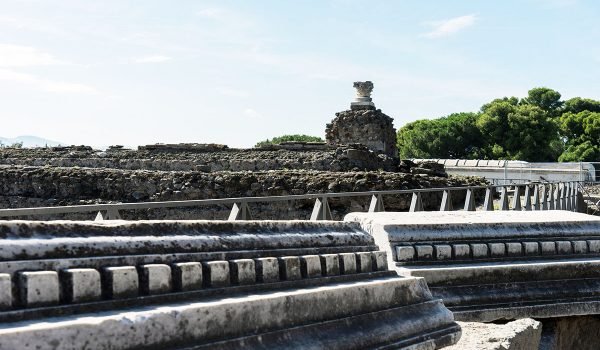Ilaria Battiloro and Marcello Mogetta (Mount Allison University, University of Missouri)
APP Contact Person Francesco Muscolino
New research in the area of the Temple of Venus has been focused on its eastern courtyard. It has been conducted in parallel with the re-examination of previous documentation in order to determine the construction phases of this sanctuary as well as the chronology. It is possible to spot a previous building giving onto a street and although its function and nature are still unknown it may date back to the 2 nd century B.C., despite the fact that many other important finds on this site date back to a previous period of occupation. That building was destroyed at the same time the Temple, which is still visible today, was being constructed, along with its adjoining buildings. The walls were razed and the reusable material was taken away. The porticoed courtyard of the Temple, built on a cast in Roman concrete necessary to erect the walls of the portico, took the place of the pre-existing buildings.
At a later time, this porticoed courtyard was altered, as confirmed by the higher ground level, probably due to issues with the drainage of rainwater.
The last phase in the life of the sanctuary, which involved its restoration during the Flavian period, was dramatically interrupted by the eruption of Mount Vesuvius in 79 A.D.. Ample evidence supports this. For example a layer of lime was found that could have been necessary at a building site to reconstruct and restore the Temple which had probably been damaged during the 62 AD earthquake.


